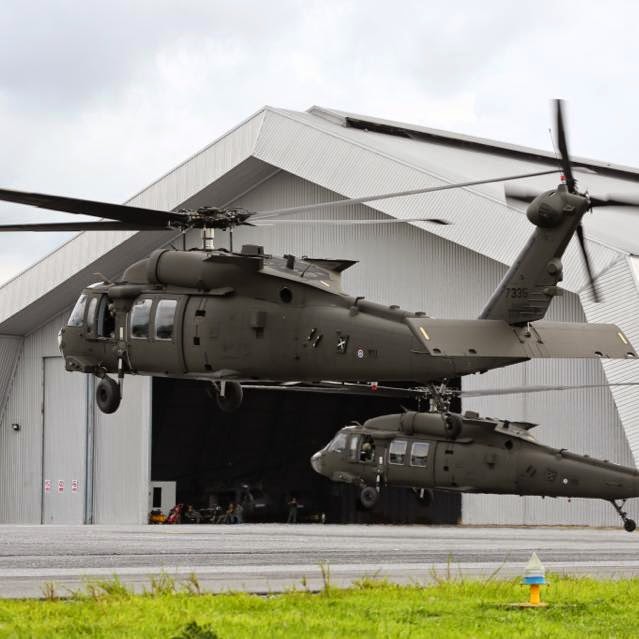Navigating Uh 60 Helicopter Laws and Conformity Demands

Regulatory Structure Overview
The regulatory framework regulating UH-60 helicopter procedures incorporates a complex collection of requirements and guidelines established by aeronautics authorities. These regulations are made to make certain the reliable and secure operation of UH-60 helicopters in numerous atmospheres. The Federal Aeronautics Administration (FAA) plays a main function in developing and applying these laws, which cover a vast variety of functional aspects, including airworthiness requirements, pilot qualifications, upkeep needs, and operational procedures.
Compliance with these laws is vital for helicopter drivers to keep the highest degree of safety and functional honesty. Failure to stick to these regulations can cause significant consequences, including mishaps, injuries, and governing assents. Helicopter operators should stay educated concerning the most recent governing developments and make certain that their operations are in complete compliance with all applicable guidelines and criteria.
Airworthiness Examinations and regulations
Among the regulative framework controling UH-60 helicopter procedures, an important emphasis exists on conformity with Airworthiness Directives and carrying out extensive examinations to support safety and security criteria and operational reliability. Airworthiness Regulations (ADs) are issued by aeronautics authorities to attend to hazardous conditions in aircraft, including the UH-60 helicopter, and mandate particular activities to be taken by drivers or owners. Conformity with Advertisements is compulsory, and failure to follow these instructions can result in significant repercussions, consisting of grounding of the airplane.
Normal evaluations are paramount to ensuring the airworthiness of UH-60 helicopters. By adhering to a stringent examination program, operators can identify and deal with potential concerns promptly, thus enhancing the safety and security and integrity of UH-60 helicopter procedures.
Pilot Credentials and Training

Pilot training for UH-60 helicopters is detailed and covers a variety of topics, consisting of aircraft systems, emergency situation procedures, navigating, and mission-specific training. In addition, pilots undertake simulator training to practice different emergency situation circumstances in a regulated environment. This training aids pilots develop the needed abilities to handle challenging scenarios successfully.


In addition, recurring training and professional growth are important for UH-60 pilots to remain present with the most up to date guidelines, innovation, and finest methods. By purchasing pilot credentials and training, drivers can improve security, maximize efficiency, and guarantee conformity with governing demands in the procedure of UH-60 helicopters.
Functional Limitations and Demands
Pilot certifications and training act as the foundation for comprehending the operational restrictions and demands related to UH-60 helicopter operations (uh 60). These functional constraints are implemented to make sure the safety and security of the crew, guests, and the aircraft itself. Operational limitations might consist of factors such as climate conditions, weight limitations, altitude restrictions, and operational borders. It is vital for pilots to be skilled in these restrictions to make informed decisions throughout trip procedures. In addition, conformity demands, such as adhering to certain flight paths, communication methods, and emergency situation treatments, are crucial for keeping functional security and governing compliance. Pilots need to stay current with all functional restrictions and needs via routine training, instructions, and assesses to alleviate dangers and make sure efficient and secure UH-60 helicopter operations. By prioritizing adherence to these operational standards, pilots can enhance the general safety and performance of their objectives while maintaining governing standards.
Emergency Procedures and Conformity Screening
Reliable emergency treatments and thorough compliance screening are crucial components of keeping operational safety and security and regulatory adherence in UH-60 helicopter procedures. Emergency procedures include procedures for numerous scenarios, consisting of engine failings, fires, hydraulic concerns, and more. Pilots and team members have address to be well-versed in these procedures to react quickly and successfully in emergencies. Normal compliance testing makes sure that the helicopter meets all regulative requirements stated by air travel authorities. This testing entails extensive evaluations, checks, and evaluations to verify that the airplane is airworthy and in compliance with all suitable laws.
Compliance screening also encompasses tools onboard the UH-60, such as interaction systems, navigation instruments, and security gear. Making certain that all tools is functioning appropriately and satisfies governing requirements is necessary for safe procedures. In addition, compliance testing might involve simulations of emergency circumstances to evaluate the staff's response and the helicopter's efficiency under tension. By prioritizing emergency situation procedures and conformity screening, UH-60 operators can minimize dangers and show their commitment to safety and regulative compliance.
Verdict
To conclude, adherence to governing framework, compliance with airworthiness directives, pilot why not try here credentials and training, functional constraints, and emergency situation treatments are vital for navigating the regulations and demands of operating a UH-60 helicopter. uh 60. It is vital for drivers to prioritize safety and security and make sure complete conformity with all appropriate laws to maintain the airworthiness and operational honesty of the airplane
Navigating the regulatory landscape surrounding UH-60 helicopter operations requires a nuanced understanding of the detailed web of policies and conformity needs.Conformity with these policies is crucial for helicopter drivers to preserve the highest degrees of safety and security and functional honesty.Amidst the governing framework governing UH-60 helicopter procedures, a critical focus exists on conformity with Airworthiness Directives and performing complete inspections to support safety criteria and functional dependability.Reliable emergency procedures and complete conformity screening are vital parts navigate to these guys of maintaining functional safety and governing adherence in UH-60 helicopter procedures. Regular conformity testing makes certain that the helicopter meets all regulative needs established forth by air travel authorities.